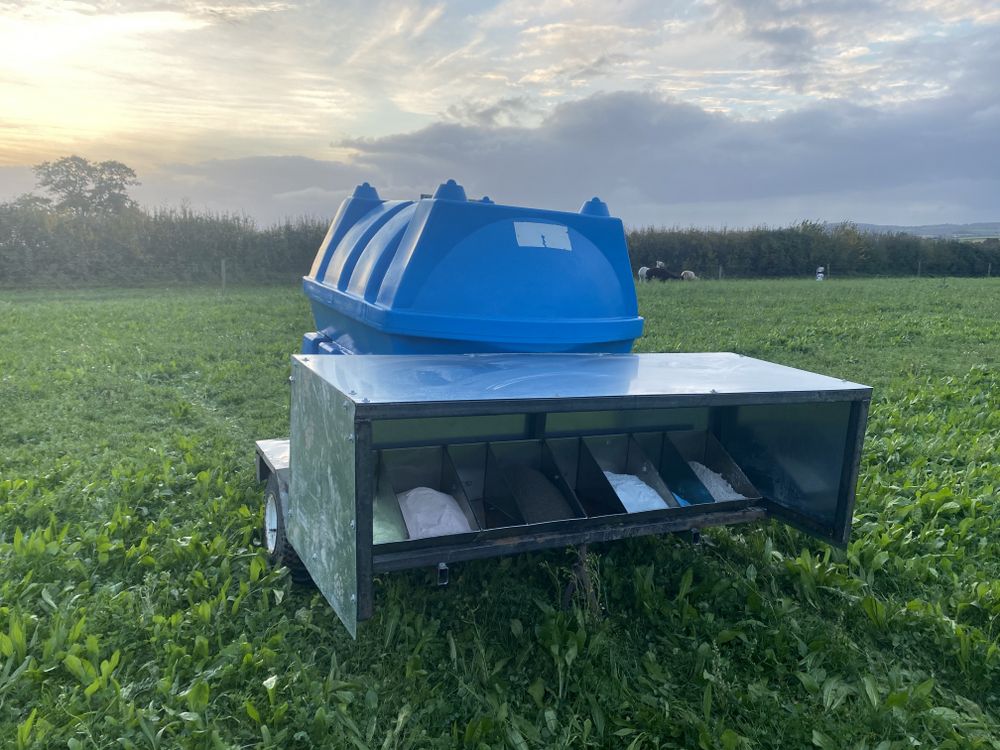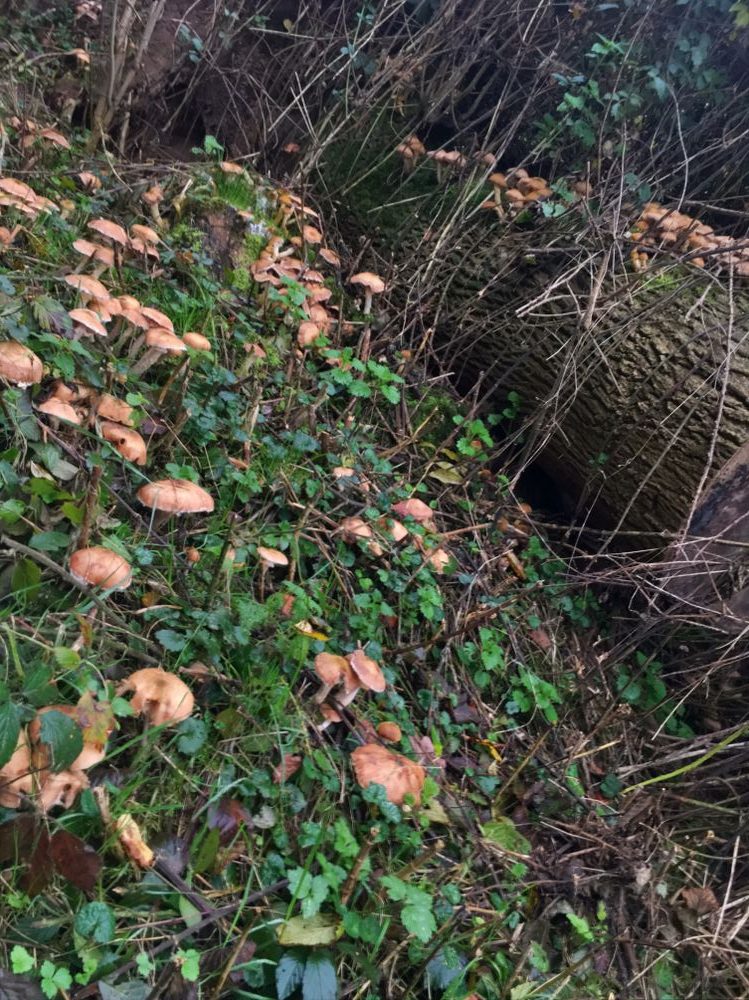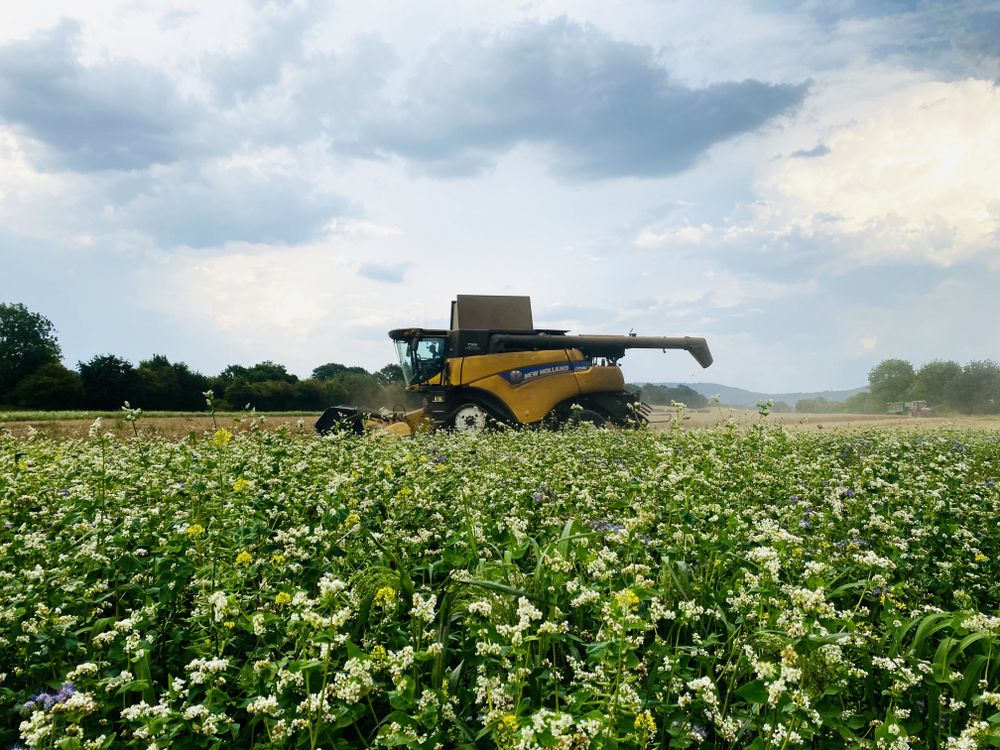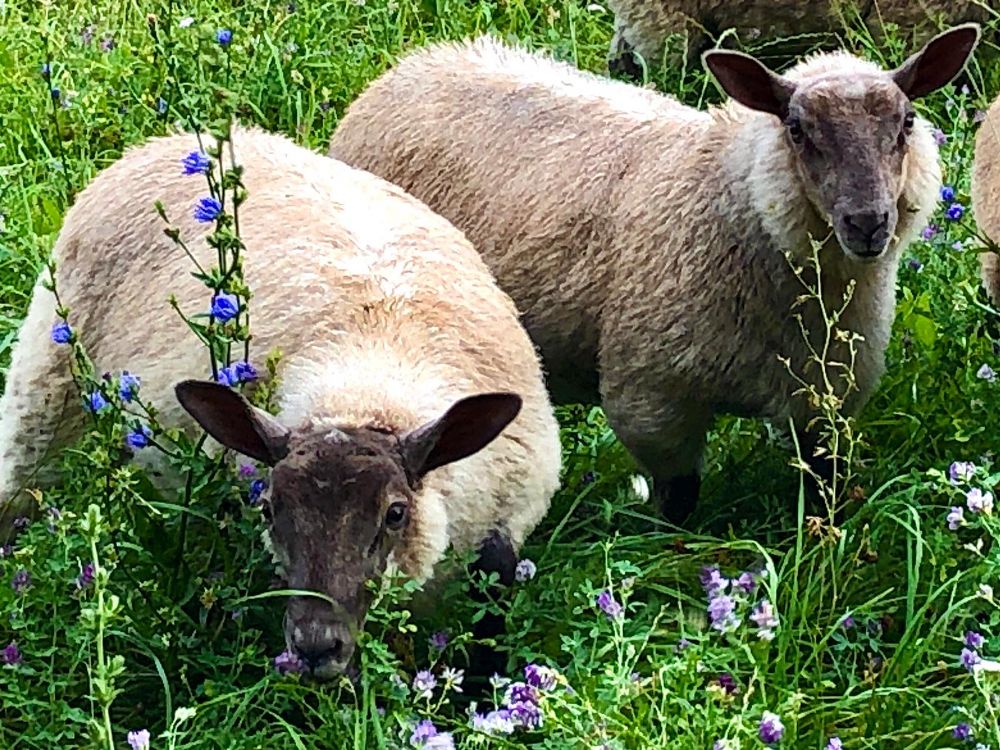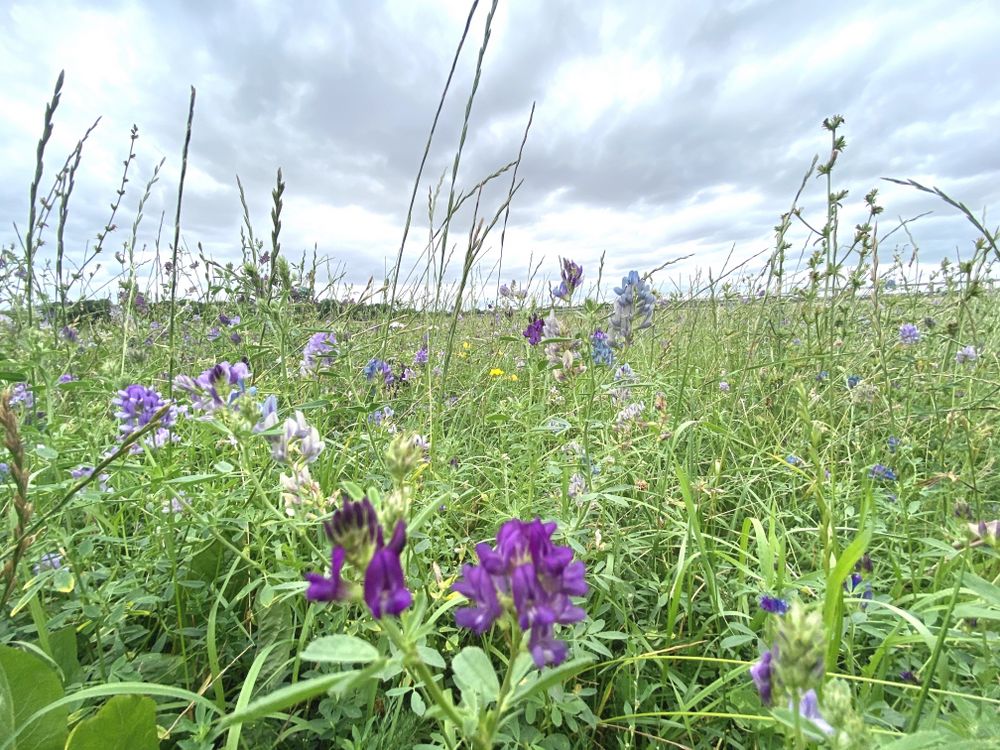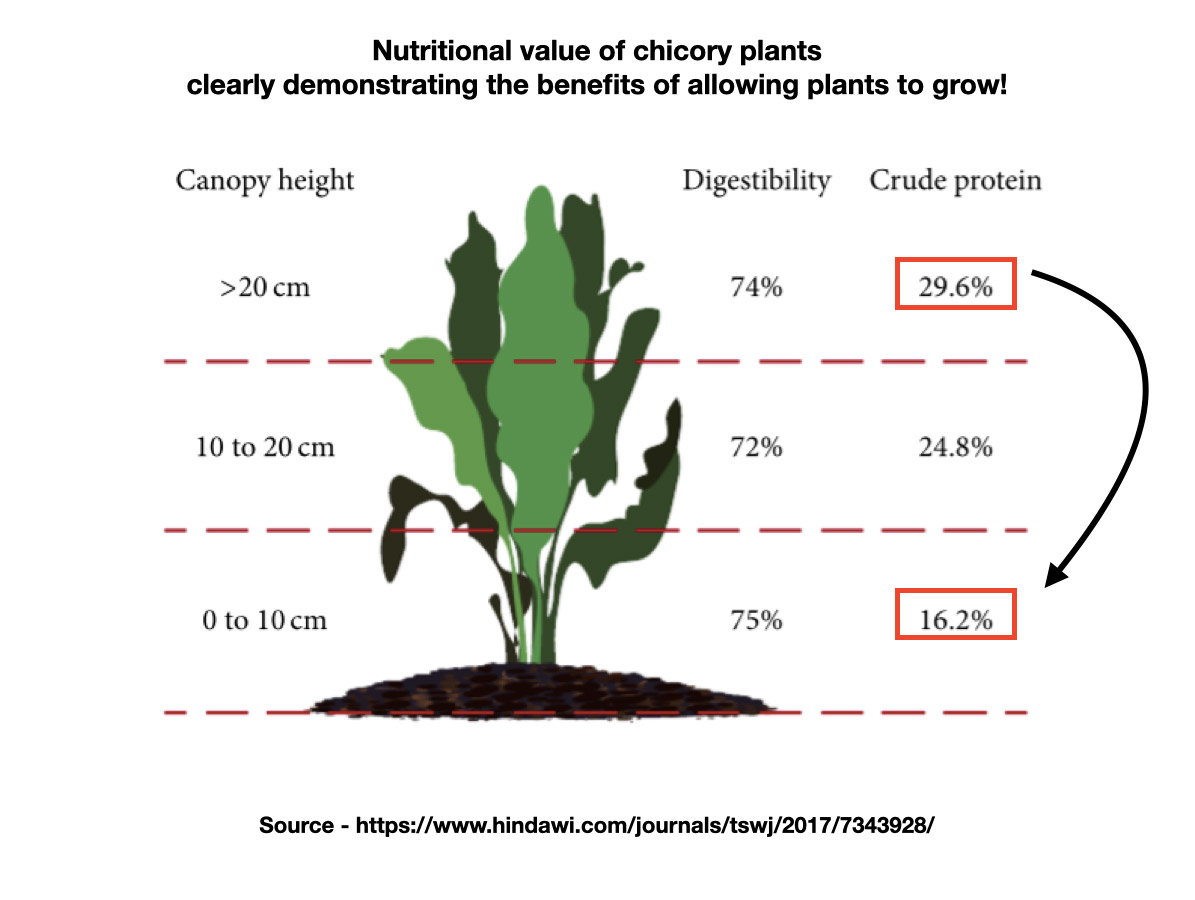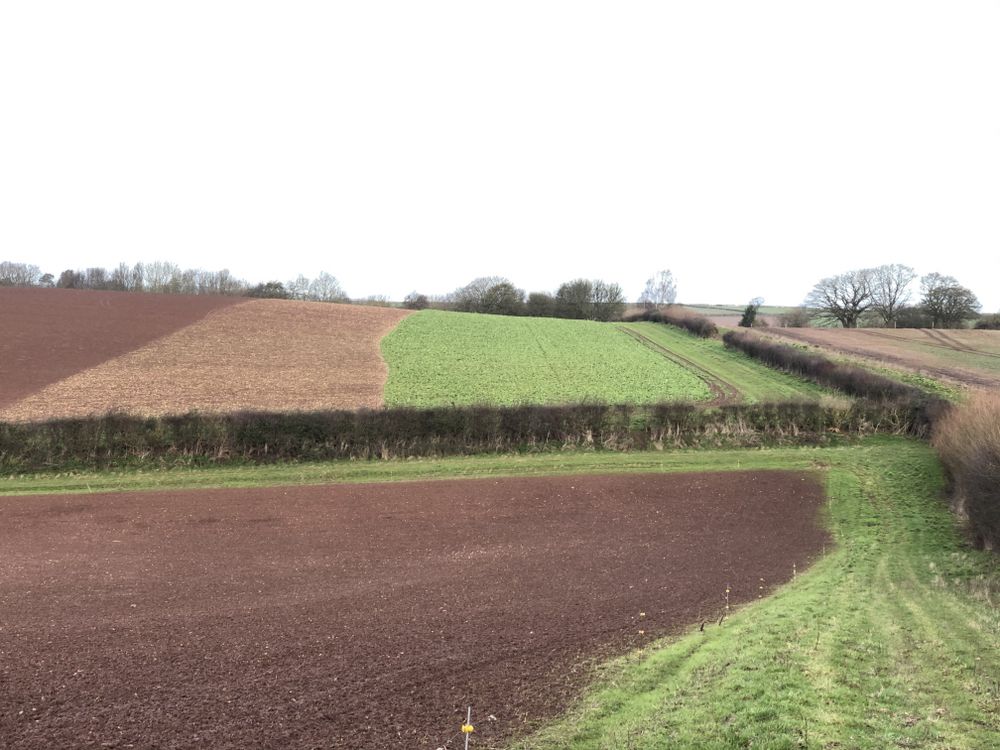Animal Fodder – feeding all our livestock as sustainably as possible
Animals were blessed with legs, these legs allow them to walk to forage and water, we, therefore, believe that it is easier to take the animal to food than to grow, harvest, store, process and deliver the food to the animal in barns which also require large quantities of bedding.
Mammals have even evolved to separate urine and faeces (male have organs in totally different places, females have totally different trajectories) why? because the diagram shows that when mixing the 2 together the resultant material volatilises some of the most sort after plant nutrients into the atmosphere!
At Townsend we firmly believe in not only protecting soil, air and water but actually enhance them. Therefore the inclusion of animals (as in any natural ecosystem on earth) is essential. when I say animals, all farmers are livestock farmers (just most livestock is invisible!) (everyone is a livestock farmer picture) In order to feed the invisible livestock they prefer a living root, part of the 5 principles of soil health, a continuous living root, in order to keep roots living, this requires management of both crops but especially grazing land, (most) grass is overgrazed and as can be seen from the diagram (sheep picture with grazing and root explanation) overgrazed grass prevents roots from growing, if this occurs they are not excreting carbohydrates for the soil microbes. Therefore it is essential that grazing leaves plants with approx 50% of leaf as a minimum and therefore a living root. Unfortunately all too often, animals are overgrazed not only grass but stubble turnips as can be seen by the dreadful historic photographs I have taken of Townsend, whereby the poaching and overgrazing not only left the soil bare and therefore no root at all for microbes, but actually promoted the action of the weather to erode away yet more soil!
Mob grazing
This is the replication of nature before humans began domesticating livestock and then enclosing them. Mob grazing replicates the large herds that used to roam across the prairies of most famously the USA but much of Eurasia too. This is the process of large populations of animals being kept in a very tight space by predators (Lions, wolfs, lynx eat) but continuously walking, the animals would trample quite a lot of the vegetation, eat some and leave some whilst defecating not he ground helping to feed the recovery of the forage once moved on. So large populations on a small area of land for a very short time and not retuning until the migration headed the opposite way. Allan Savory (of the Savory institute) believed back in the 1960’s that deforestation of Zimbabwe was caused by the over population of elephants and working for the government at the time ordered the culling of 40,000 elephants. The problem didn’t improve before Allan began to realise that it wasn’t the elephants that were the problem, but the fact the lions had been hunted and killed and prevented them for keeping the elephants moving. The soils that this type of natural mob grazing are some of the richest on planet earth in terms of carbon content and fertility.
Replication is fairly simple, large fields are divided (by electric fences) and then the animals are packed into the small paddock for a short period of time (depending on stocking density but on average 1 day movement) and then the paddock is rested to recover whilst the animals are moved on and on. (see 2 diagrams showing ‘traditional’ set stocking (where a quantity of animals are turned out onto a field for an extended amount of time and mob grazing the same parcel of land.
Mob grazing has more benefits than the soil and soil biology, but animal health because the animal is constantly moving to fresh ground, the worms and parasites are unable to complete their life cycles and therefore the burden lessens and less medication is required which is also good for soil health (wormers have a huge detrimental effect on soil biology) It also gives the animal much higher nutritional food, because it is grazing larger plants with a greater ability to photosynthesise creating more sugars. The environmental benefits are huge too, providing much denser habitat for wildlife.
Whilst the technique of grazing is important, what the animals graze is also important, of which we have several types growing at Townsend, these are herbal leys, ley of herbs, cover crops, catch crops and wild flower meadows, all of which have a significant importance at Townsend Farm.
Essentially very few animals would choose a diet of just grass! It would be akin to humans living on a diet of cabbage (you can live on it, but you’d struggle for all the essential nutrients you require and the diversity of flavours and combinations of fats, proteins and carbohydrates would somewhat be lacking! Never fear of course, the farmer has available to him a huge array of mineral ‘buckets’ that can be purchased ready made pre mixed with molasses. These mineral buckets have been designed to provide a complete correction of mineral deficiencies that may occur, despite not knowing what minerals may or may not be available to he animals depending on soil type and forage available. A salesman dream when combining minerals and molasses, as the animals love the sweet taste of the molasses and take in the nutrients as a result thereby eating buckets and buckets the stuff at a cost of between £30-£90 per bucket.
There are of course alternatives, animals are actually incredibly clever when given the choice of food to eat, graziers forage for different plants to satisfy their needs of nutrients and minerals (ever notice why a lush field of monoculture grass or even monoculture stubble turnips and the sheep or cattle spend most of the time eating the hedges? Mineral imbalance! The diversity within the different plants in the hedge can provide a sheep with all of the different minerals they require. There is also a famous case study of the animals in the Orkney Islands following the Chernobyl disaster in the Ukraine in 1986, (the nuclear fallout on the UK caused radiation poisoning for the next 26 years) The animals who were slowly being poisoned made their way down to the foreshore to graze on seaweed (rich in iodine) to counter the affects of the radiation.
The solution is two fold, firstly would be to extract the minerals and utilise what is available in the soil, this can be done by replacing the monoculture of grass with a rich diverse species mix of forbs, legumes and grasses which all bring different attributes and minerals to the party. Different rooting systems can access and provide different minerals, some plants have a higher concentration requirement of certain nutrients and provide the grazing animals with them. Other plants have natural effects on parasites such as worms and can be used as natural anthelmintics such as sainfoin and birdsfoot trefoil both contain condensed tannins in their leaves and stems.
A wonderful species guide to herbal leys can be found
https://www.cotswoldseeds.com/species-guide.asp
More information on natural anthelmintics
https://www.cotswoldseeds.com/articles/345/anthelmintic-plants
This combination of diverse plants are termed ‘herbal leys’ which can be purchased readily from many UK seed companies, however, the herbal leys have become somewhat bastardised and what many now purchase when thinking they are getting a herbal ley is a mix of approximately 80% grass with a few not very competitive herbs and legumes, often resulting in a grass/clover mix which could have been purchased for far less in the first place! I have since spent a long time designing a ‘Regenben ley of herbs’ as offered by Oliver seeds https://www.oliver-seeds.co.uk it can be seen why a herbal ley and ley of herbs should not be confused, we have had tremendous results from the ley of herbs with live weight gains of spring lambs at 200 grams per day as well as al of the health benefits and absolutely no requirement for supplementary feeding or minerals.
Secondly, with the intelligence of animals, it would be far more economic to provide a free-choice mineral buffet bar, this allows animals to select the minerals (if any they require and to help themselves to that) We have constructed different ones for different animals, all o wheels and all which include a water bowser and water trough which can be moved easily between mob grazed paddocks as required. Photographs of our free choice mineral buffet bar and water tank/trough combination.
The minerals we offer are as follows
Molasses
Limestone flour
Apple cider vinegar
Urea free seaweed meal
Cod liver Oil
Ground Himalayan Salt
Copper Sulphate
Yellow dusting sulphur 99%
Dolamite
The next grazing option is to utilise both the cover and catch crops grown around the farm, but first a brief explanation of the terminology.
- Game cover crops (Game covers) planted to provide mainly a place in which game birds are attracted to, through cover or feed or a combination of the two.
- Cover crops are planted following the combine in the late summer to provide living roots and soil cover (armour) until a spring crop is to be established 7-8 months later. The cover crops are generally flowing species and provide a huge abundance for insect life and biodiversity above ground.
- Catch crops are planted after an early harvest crop such as early potatoes, winter barley or oilseed rape and are established to provide living roots and soil cover (armour) during a short growing window (but when the suns energy is greatest through the summer) until an autumn crop is planted.
- Companion crops are planted with the main crop, these are often planted with oilseed rape to provide additional nutrients through their soil foraging at the point of the companion destruction either through frosts (buckwheat) chemically (herbicides) or mechanically (hoeing)
- Understory crops are planted to provide a continuous living mulch to protect soil at all times with cover and living roots. This is generally narrow-leaved white clover which has a relatively small canopy and is designed not to compete with the crop, provide the crop nitrogen due to the excess produced by the clover and then an automatic summer cover when the cash crop has been harvested.
All of the above can be utilised to provide fodder for animals, Game covers can be grazed following the shooting season (1st February) until the need to replant the game covers in the late spring – often these are quite woody and fairly unpalatable which is ideal for our goats and pigs, less so for cows and sheep. The maize as mentioned before is combined on a dry day and the kernels used for our chicken feed.
Cover crops are a great winter forging option and grazed correctly can provide great benefits to both the animal and the soil. The covers should be a rich diverse mix of species, some of which should be ideally fairly unpalatable which can be trampled to protect the soil surface. Of course, mob grazing, moving frequently and keeping animals away from previous grazing is essential, A diverse mix will also provide the grazing animal with a much more balanced diet with a lower requirement for the supplementary free choice mineral bar. Attention must, of course, be played to the weather and if rainfall becomes absolutely excessive, the animals should be removed if being to cause soil damage.
Companion crops are generally not used in the UK for animal forage.
Understory crops provide a great source of clover when the cash crop is removed, as this is a single species it can cause some mineral imbalances, therefore the clover is generally harvested by mowing and ensiling it and fed to animals as and when the necessity requires due to adverse weather conditions in a balanced mixed ration.
Around Townsend we have various parcels of woodland, scrubland (old railway line) and permanent pasture, the permanent pasture is what I will focus on here, although our woodland (Monks grove) is an absolute explosion in bluebells in the spring and something you just can’t help but love, dotted with the occasional wild narcissus, red campion, wood anemones and the lesser celandine. That combined with an abundance of bird species, fruit, nuts, fungi, small and large animals and a few less desirable species such as Himalayan balsam and the grey squirrel.
Permanent pastures and hay meadows are extremely important and rare in the UK (Thanks to Hitler and the UK’s response “dig for victory”) because they have been ploughed up and now support a wide range of cropping (although 80 years on, many now realise why they were perhaps left to grassland in the first place!)
There are now only 1500 hectares of lowland hay meadows left in the UK a 98% decline in what was there pre-first world war.
https://www.countryfile.com/wildlife/trees-plants/guide-to-britains-hay-meadows/
We have both a river meadow ‘Withy beds’ (now termed seasonally flooded meadows) and a lowland hay meadow ‘The Cotts’ Both our meadows had been left for a while, overgrazed by horses and overrun with creeping thistles and docks and the occasional nitrogen loving nettle patches (occurring in latrine animal areas) occasionally sprayed for various weeds and offered all very little in the way of diversity.
I very much wanted to re-establish traditional hay meadows, which could be grazed and then left to flower for the spring and summer before a late-summer hay crop was taken, (after the seeds had been dispersed) for times in which animals couldn’t be held onto the land in the winter due to adverse weather conditions. However, I really didn’t want to order a bag of seed that was relatively non-native to the area and the heritage of the seed could really have come from anywhere across the whole of Europe or even the world!
I really wanted seed from the wye valley, preferably upstream which would have floated down the river historically and deposited seeds in times of flooding on lower river meadows, fortunately I have teamed up with Herefordshire Meadows run by the very enthusiastic and knowledgeable Caroline Hanks. http://www.herefordshiremeadows.org.uk where she organised the brush harvesting of seeds from the Sturts (https://www.herefordshirewt.org/nature-reserves/sturts-north) up river and we planted them down in our withy beds as a successful pilot in 2019 and full reestablishment in 2020. The full trial can be seen here.
The cotts re-establishment will occur in the late summer of 2021 where again lowland brush harvested seed will be brought from a local site with the same geology and climate and re-established here at Townsend.
All of these types of grazing will be identified by the nature walks offered by Ben on a Thursday evening, to book please click the button below.








